Common loon photo by Tammy Pickapa
It’s springtime and that means bird migrations are upon us! Many species are returning from their wintering grounds. Given Chicago’s proximity to the fabulous Lake Michigan, we’re going to discuss waterfowl for this edition of the Up & Up – specifically loons and grebes!
Loons and grebes are beautiful birds. The multiple species within these bird orders (Gaviiformes and Podicipediformes, respectively) have wide varieties of distinct plumage and coloration. Both are diving birds that you may mistake for a type of duck at a quick glance. They float low on the water with their legs further to the rear of their bodies to help propel them underwater, so their beautiful plumage may be hard to see when on water. Furthermore, many will not be breeding at this time (only migrating to said breeding grounds), which is when the colors of these birds really appear. The key difference between the two is that loons have webbed toes while grebes have lobed toes (though this may be hard to spot from far away or when they are in water). With the basics nailed down, let’s take a deeper dive into the specific birds you might see in the area!
Loons
The five distinct loon species are as follows: Arctic Loon, Common Loon, Pacific Loon, Yellow-billed Loon, and Red-throated Loon. Loons are generally larger than other waterfowl such as ducks. Unfortunately, only two come through our area during their spring migration – the Common Loon and Red-throated Loon. The Arctic, Pacific, and Yellow-billed varieties typically winter on the west coast of the U.S. and make their way to Alaska and the Arctic for breeding. In terms of feeding, they often swim along the surface with their heads partly submerged, peering below for prey. Then they’ll embark on a trademark dive, propelled by their feet. They mostly eat fish, with the larger Common Loon feeding on larger fish than the smaller Red-throated. Loons will also eat crustaceans, mollusks, insects, and frogs. These birds are technically omnivores, able to eat some aquatic plants if necessary. Their courtship behavior is truly spectacular, marked by 3 common patterns:
· Pairs dipping bills in water repeatedly
· Rearing up to vertical posture with wings partly spread
· Racing side by side across surface of water
Now let’s discuss the migration patterns, appearance, and calls of the Common Loon and Red-throated Loon – the two you should be on the lookout for this spring!
Common Loon
Migration – Common Loons winter in coastal areas and migrate singly or in small flocks just offshore, often low over water. They usually fly higher when migrating over land. Large numbers may pause in migration on Great Lakes and other inland waters.
Appearance – Males and females look similar, with males typically a bit larger. They have a sharp, pointed, and relatively long beak. Their coloration will be different depending on if they are in breeding season or non-breeding season. In breeding adults, their heads are a slick black color with keen red eyes. Their neck has a mix of black and white feathers with a white belly. Their backs and wings are black with speckled white. In non-breeding season, their beaks will have a black and white coloration, while the top of the head and neck is black with white underneath. Their backs and wings appear mostly black.
Calls and songs – their best-known call sounds like a wailing laugh with a yodeled “oo-AH-ho” in the middle and a loud “kee-a-ree, kee-a-ree”. Their trilling tremolo duets are quite beautiful.
Where to find - Have a look in Chicago Botanic Garden (Glencoe), Axehead Lake Forest Preserve, Montrose Point, and larger lakes in Lake County.
Red-throated Loon
Migration – They will usually migrate singly but sometimes in small groups, along coast, a mile or two offshore. Rarely seen on inland waters south of Canada except on Great Lakes, where large numbers may stop on migration. The Red-throated also breeds farther north than any other loon, reaching the northernmost coast of Greenland.
Appearance - The smallest of the loons. Breeding adults have beautiful grey head with striking red eyes, complemented by their namesake red throats. They share white bellies like their Common Loon cousins, with a greyish and white speckled back/wings. When non-breeding, they lose their red throat feathers, and have lighter white plumage on the throat that moves closer around the eyes, giving their heads less grey coloration. Their bellies remain white with grey-white speckled back/wings.
Calls and songs – You won’t hear them much when away from breeding grounds, but they call in loud wails and shrieks. Their calls have a more abrupt cadence and sound compared to Common Loons.
Where to Find – Chicago Botanic Garden (Glencoe), Montrose Point, Northwestern University Lakefill, and Jackson Park.
Photo Gallery of Local Loons

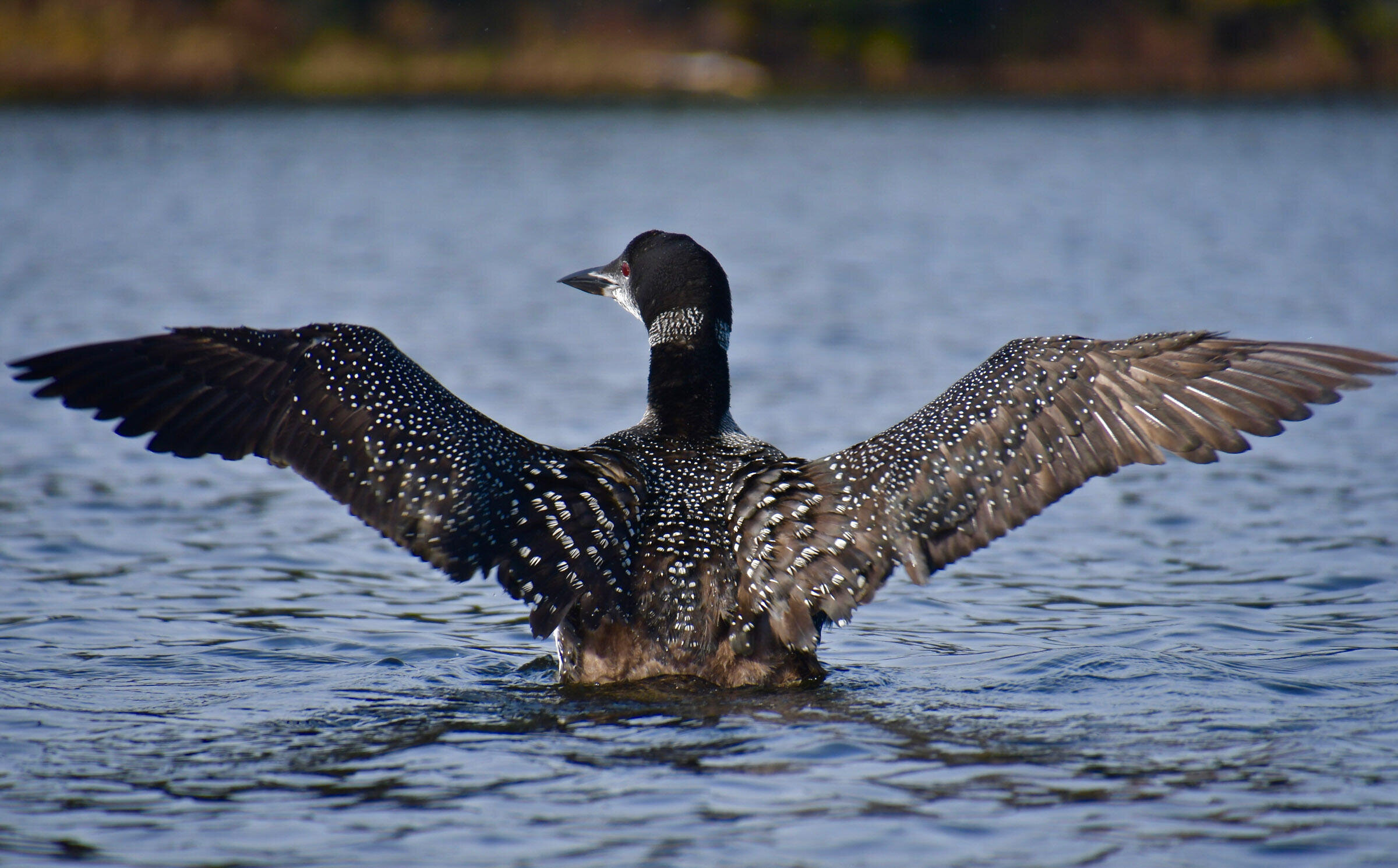
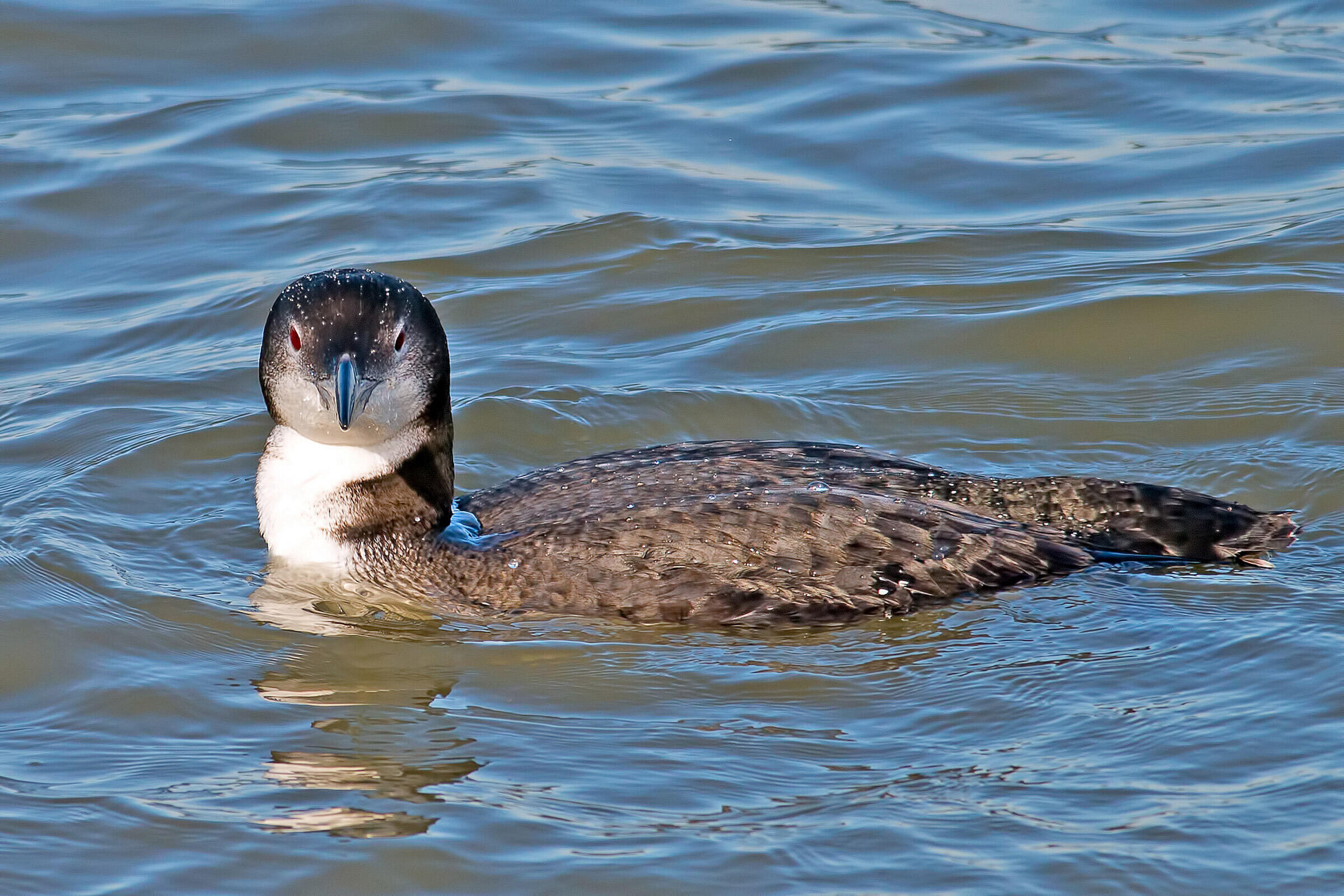
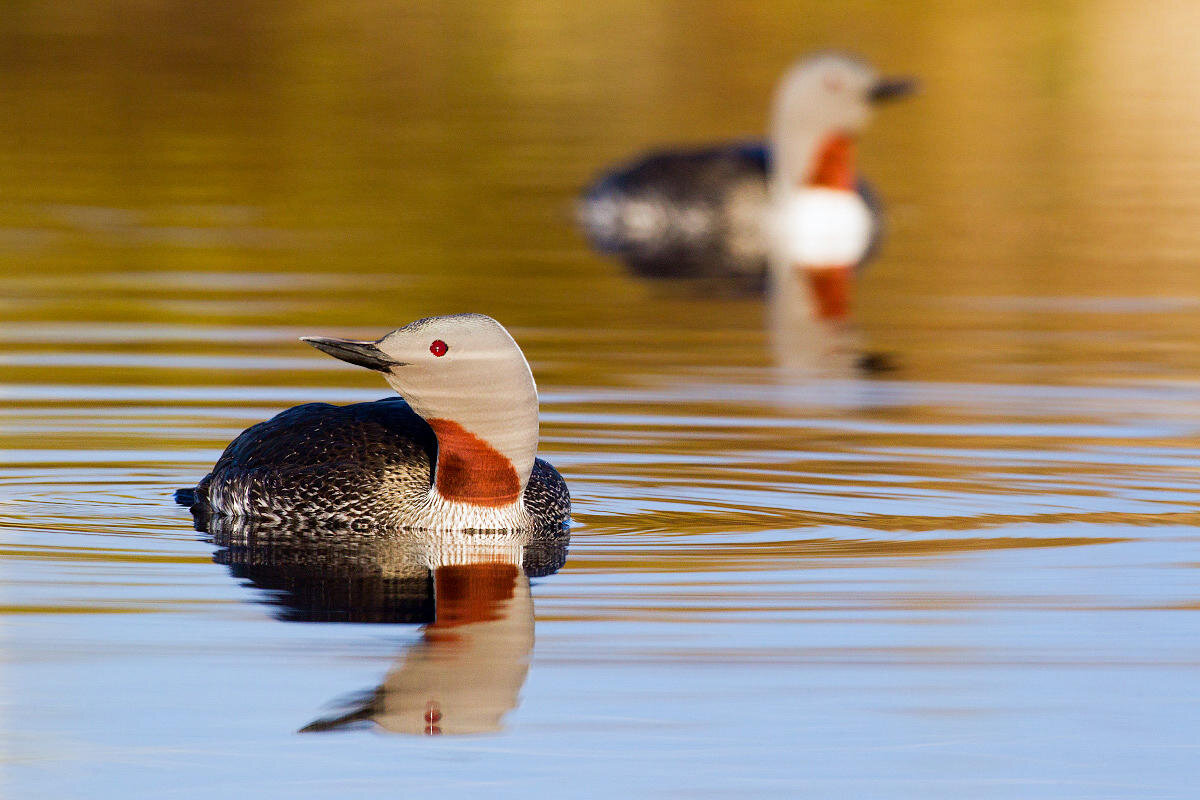
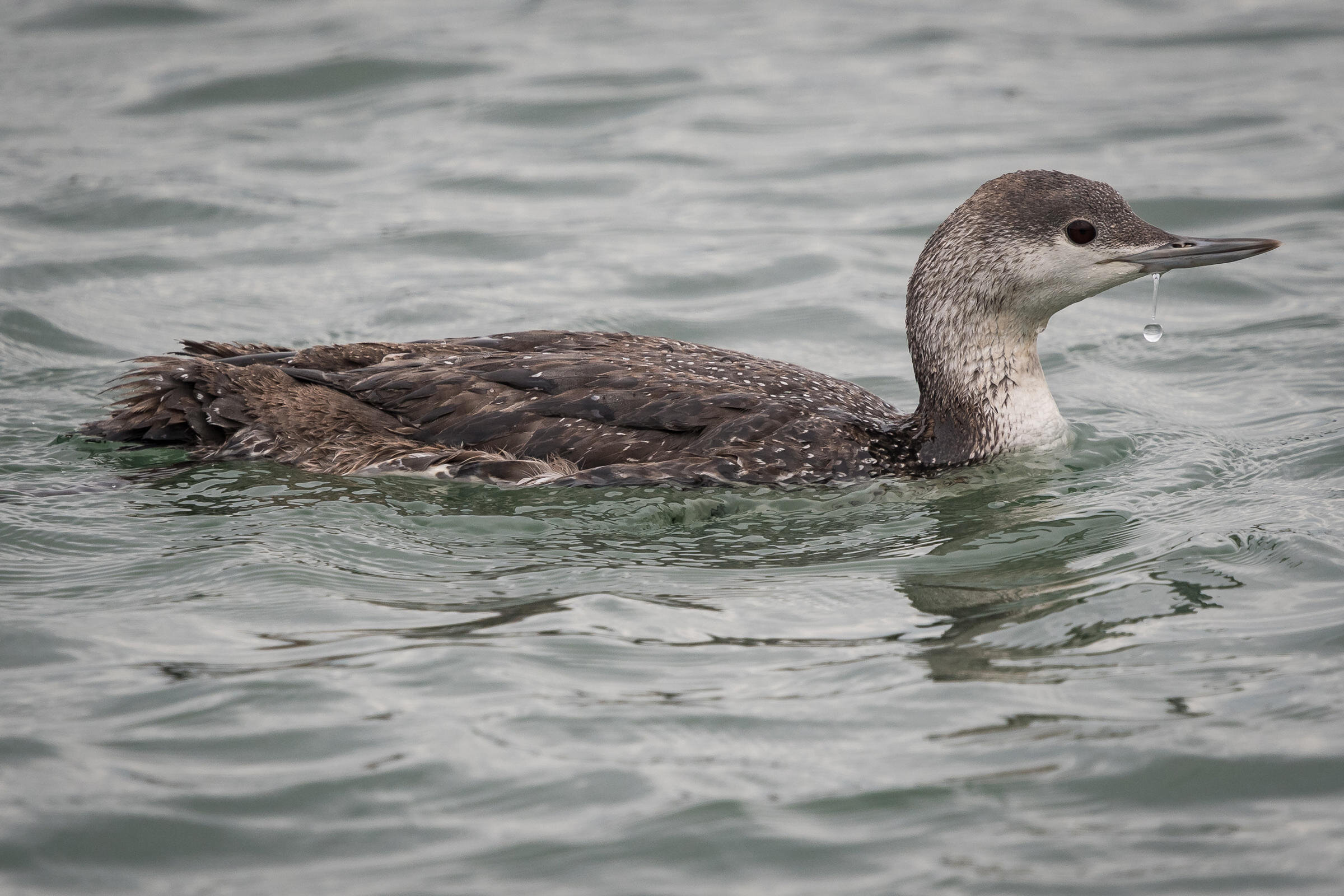
Grebes
On to the loon’s lobed-toed cousin, the grebe! There are a few more grebe species than loon: Clark’s Grebe, Eared Grebe, Horned Grebe, Least Grebe, Pied-billed Grebe (bonus – this one actually nests in our marshes!), Red-necked Grebe, and Western Grebe. Again, sadly we won’t see all of these wonderful birds, but the sharp-eyed birder will be able to spot the Red-necked (possibly catching some late wintering ones), Horned, Pie-billed varieties, and perhaps even the rare Eared Grebe! Clark’s and Western varieties remain on the western part of the US, while the Least is an outlier – a non-migratory bird of the American tropics, ranging into Texas. The grebe’s feeding behavior is basically identical to the loon – swimming on the surfaces with its head submerged, scanning for prey. When it spots food, it dives underwater propelled by its feet. They mostly eat insects and fish, with the Eared grebe preferring crustaceans. Uniquely, it swallows feathers, with some species feeding them to their young. Courtship behaviors include loud calling, and the Horned, Red-necked, and Eared engage in highly ritualized performances. The Horned and Red-necked will rise to vertical position on water with head feathers fully raised, turning heads rapidly; both dive and come up with bits of weed in bills, and engage in little dances going side by side while holding their weeds (talk about dance moves and a floral touch!). Eared grebes don’t dive down and pick plant bouquets for each other, but will still rush by each other on the water (https://www.audubon.org/bird-family/grebes).
Like we did with loons, let’s review the migration patterns, appearance, and calls of the ones you can hope to see in the Chicago area:
Horned Grebe
Migration – These birds usually migrate alone, by day along the coast and by night over land. More have recently started wintering on man-made reservoirs in the southeastern states. They pass through much of the U.S. on their migration.
Appearance – When breeding, their appearance is truly striking! Their namesake golden “horns” shoot from their beak up above their red eyes. Their head and back are black, with their throat and flanks a shining brown. Their underside is white. When not breeding, their color pallet reduces to mostly black top-facing feathers and white bellies.
Calls and songs – they are typically silent, but can engage in some light croaking, shrieking and chittering.
Where to find – look for them at Montrose Point, Northerly Island, and Busse Woods
Eared Grebe
Migration – Eared Grebes typically live in the western half of the U.S. and wintering down through Mexico, but some make their way over to the Great Lakes as they love large, freshwater bodies of water for migration up north. They start migrating earlier than other species, and they move at night, but hopefully you can still see a couple!
Appearance – These look quite similar to their Horned cousins. In breeding birds, they have a black and brown coloration with red eyes, but in contrast to the Horned Grebe, the “ears” flare from above and under the eye, and the feathers are thinner, with some black coming through the golden color. Their bellies are white. Non-breeding adults will actually lose their “ears” and revert to having black heads and backs with white necks and bellies. Their wings are mostly black on top with white on the bottom.
Calls and songs – While breeding, they make frog-like cheeping notes with an “ooo-eek” sounding call.
Where to find – try Belmont Harbor, Saganashkee Slough, and of course Montrose Point
Pied-billed Grebe
Migration/Habitat – a very widespread Grebe in the U.S. with southern populations that may be permanent. They can be found all across the U.S. and nest right here in our local marshes, breeding throughout the northern U.S. and into Canada.
Appearance – As its name denotes, it has a different bill than most grebes, looking shorter and stouter. Breeding adults have brownish-grey feathers with dark eyes, white feathers under the wings with a white-ish brown belly. Most strikingly, their beaks get a black stripe through the center. When non-breeding, feathers become a bit darker, and the stripe on the beak disappears.
Calls and songs – less sociably than most grebes, makes a series of hollow cuckoo-like notes, cow-cow-cow-cow, cow, cow, cowp, cowp, cowp, that slows down at the end, also various clucking sounds.
Where to find – Northwestern University Lakefill, Gillson Park (Wilmette), Lake Calumet, and Washington Park
Red-necked Grebe
Migration – Unique to our area given that they sometimes winter in Chicagoland, with many also wintering on the eastern and western coastal U.S. While wintering, they fly along the coast during the day and over land at night.
Appearance – Breeding adults have many colors coming through: tops of heads are black with black eyes, while sides of the face are silver with white. Necks are dark coppery red moving to a white belly with black feathers on the back and tops of wings. Non-breeding adults have a yellow/grey beak, silvery grey neck leading to a white belly, with feathers on back and tops of wings a dark grey.
Calls and sounds – Mostly silent apart from when breeding, when they make a variety of squeaks, growls, and wails.
Where to find – They have been seen at Montrose Point and Steelworkers Park over the past few years
Grebe Photo Gallery
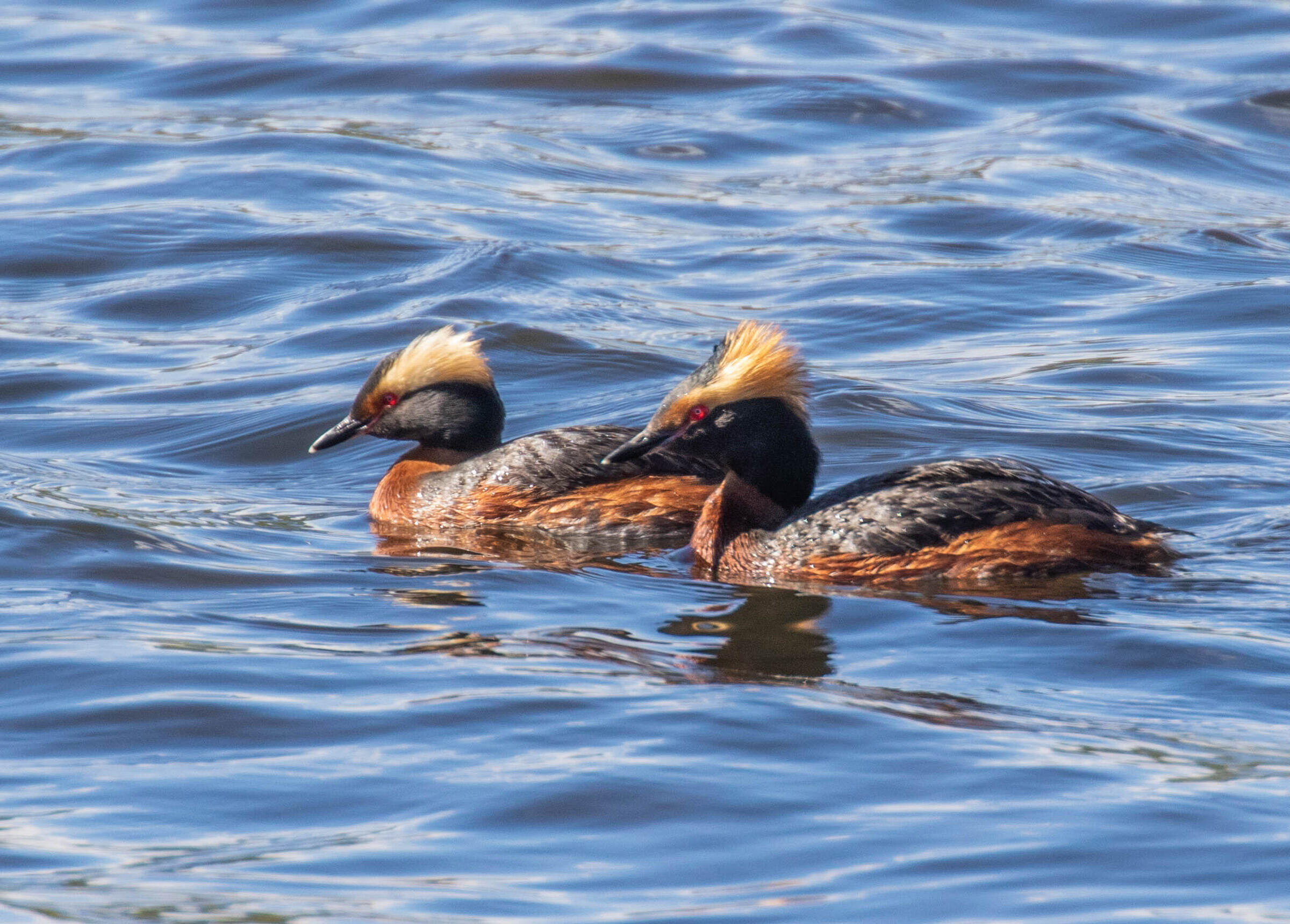
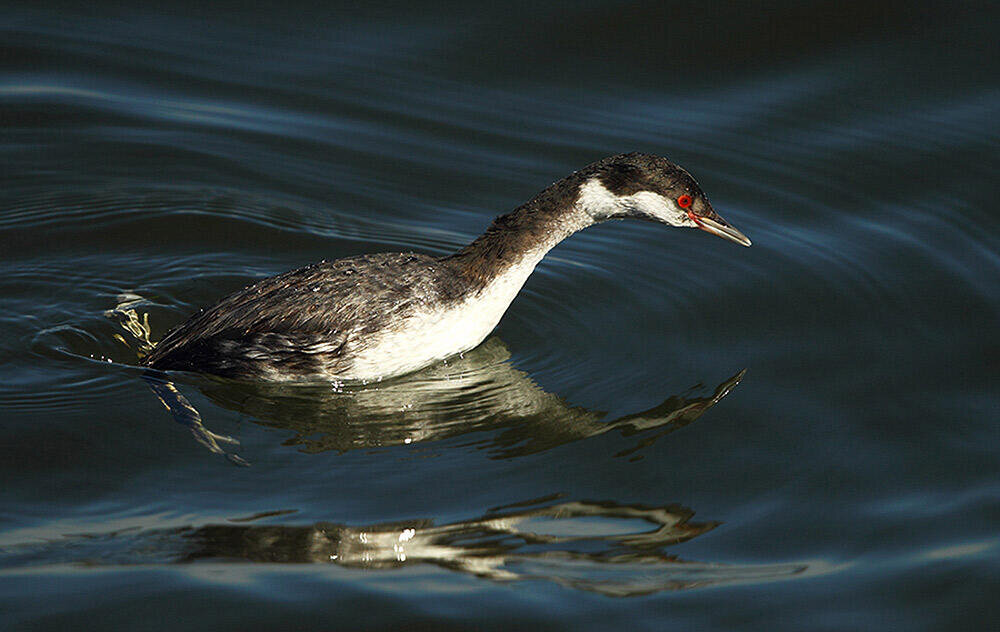

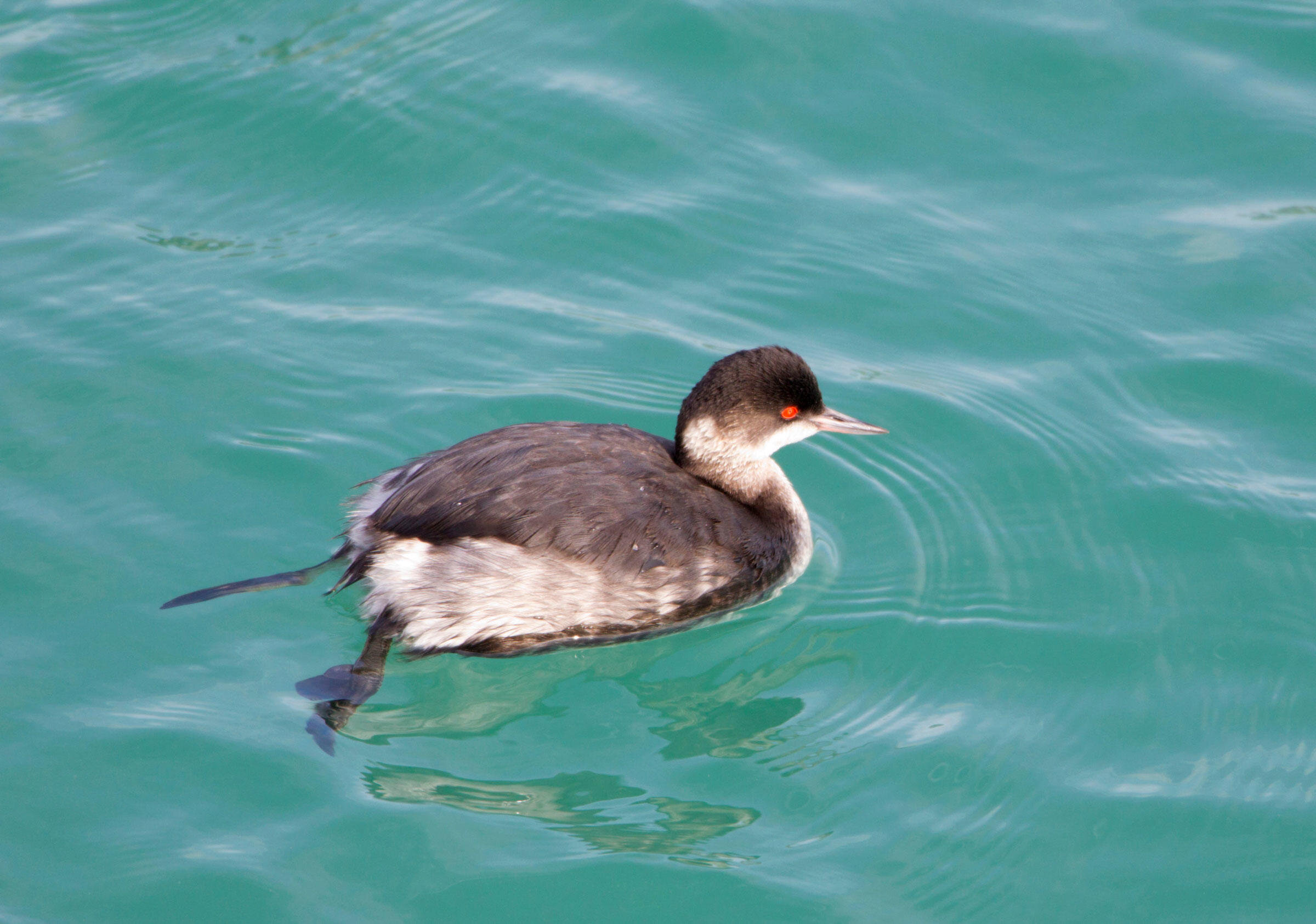
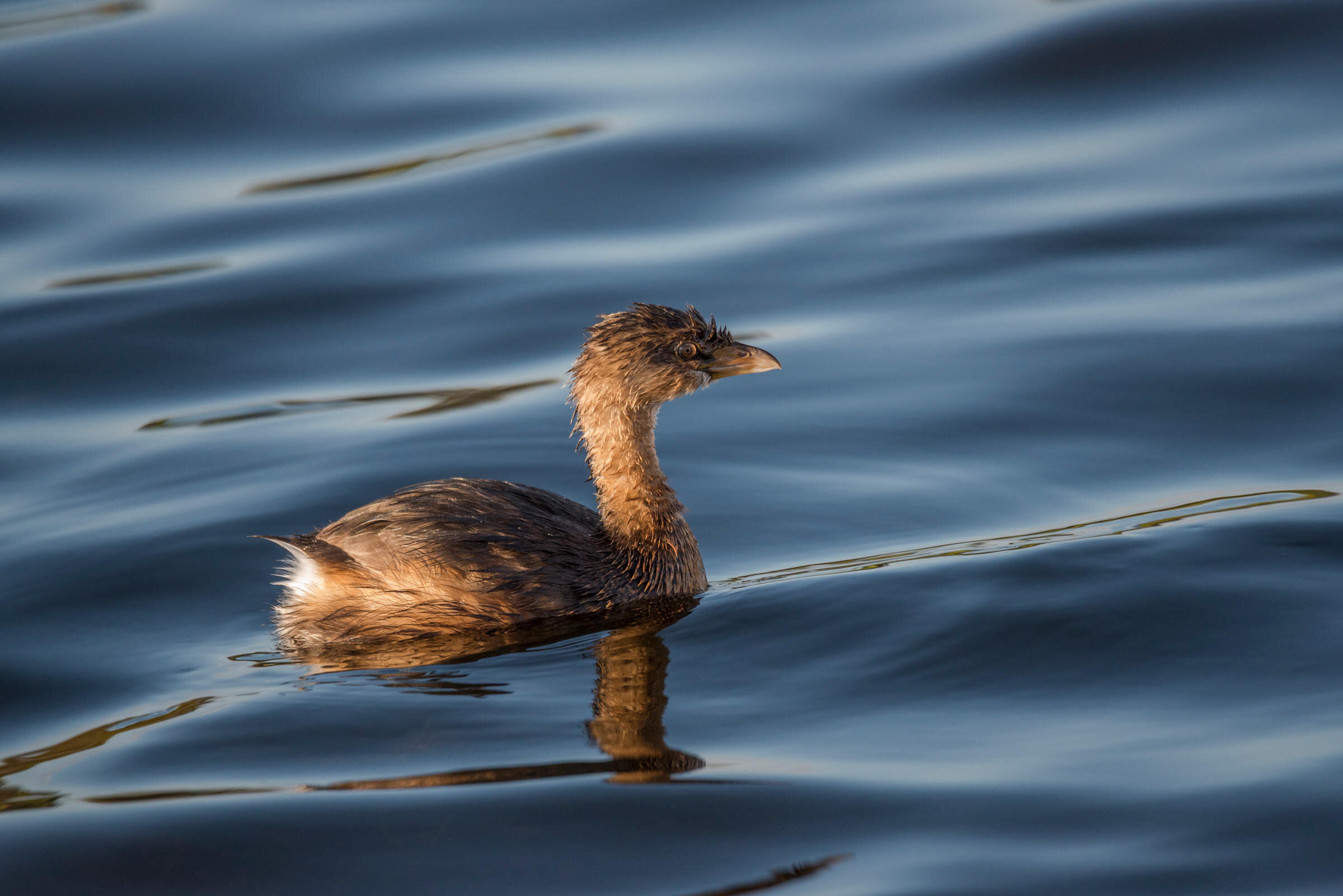
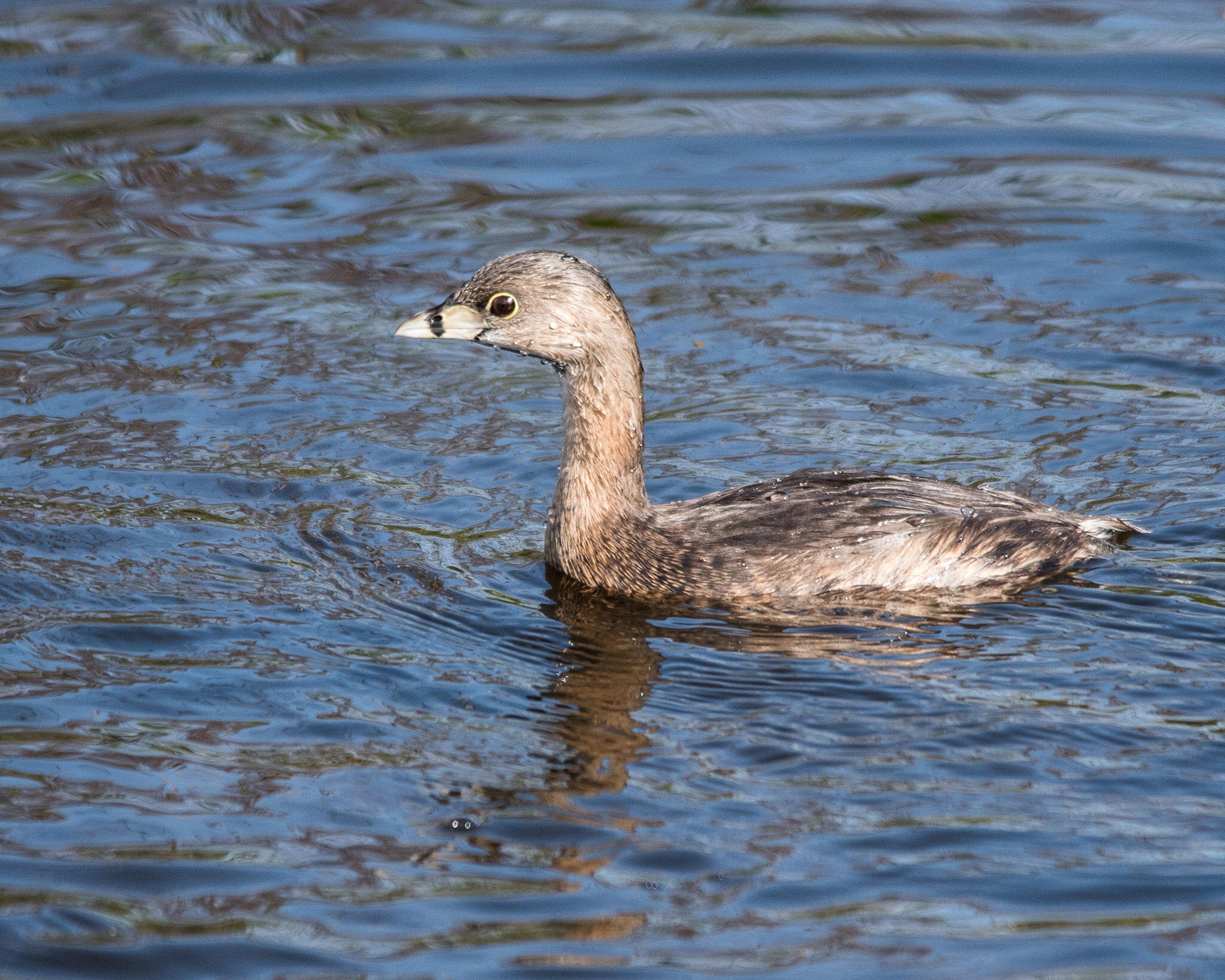
The species of waterfowl in our area is magnificent. There is something quite peaceful seeing a loon, duck, grebe, or rail floating along on a lake surrounded by trees swaying in the wind. We are very lucky that the wonderful Lake Michigan and the surrounding lakes of our area provide such great places for these birds to stop and rest. Seeing many of these birds pass through is the perfect occasion to go and enjoy the warming spring weather!
Other Sources
Drew McPartlin
Drew is a local writer who has a passion for helping people understand just how fascinating and important birds are (and he loves to surf!)


